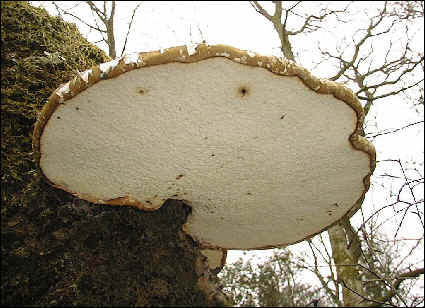Introducing Habitats
By Dr Barbara Corker
Ecology is awash with terms such as 'habitat', 'microhabitat', 'ecosystem' and 'niche'. While we usually have an intuitive understanding of what they mean, it can sometimes be less simple to define them exactly. The term ‘habitat’ refers to a location occupied by a species or a community of species, such as a woodland. A habitat equates to an 'address', whereas an ecosystem encompasses all the things which affect a particular habitat. This includes everything from the plants and animals in the habitat, to the climate and the soil. Within a particular ecosystem, different species will occupy different 'niches'. This basically equates to their occupation, for example, their position within the food web in the ecosystem. When two species occupy the same general habitat but live in slightly different places within it, they are said to be in different microhabitats (the house number in the address, if you like). For example, different species of millipedes living on a woodland floor actually live in seven or more different microhabitats. These range from heartwood at the centre of logs, to the outer surface of logs beneath the bark, through to the leaf litter underneath. Without appreciating the subtlety and enormous variety of available microhabitats, it is quite possible to stroll through a woodland and come out complaining that it contains no life at all! In fact, it is seething with life, much of it secret and hidden. It all depends on knowing how and where to look. The soil which one is walking over is rioting with life. In just one acre of soil it has been calculated that there are no less than 400 million insects and 600 million mites. These figures take no account of all the other animals such as earthworms and moles which are also present. The soil is also riddled with thousands of miles of fungal hyphae, which many plants depend upon for their very survival. |
|
 |
We often have no appreciation of the value of the most potentially rich habitats, instead clearing them away in the interests of tidiness. Something as apparently simple and useless as rotting wood supports up to 1700 different species of invertebrate. Rotting wood on its own provides an amazing variety of different microhabitats. These also include the fruiting bodies of fungi actively decaying the wood. |
| . Some of these microhabitats are enormously specialised. Bracket fungi in particular provide homes for a number of different insects. A small black beetle, Dorcatoma ambjoerni, is a real specialist as it has been found only inside hollow beeches, in the fruiting bodies of the bracket fungus, Inonotus cuticularis. Even living trees can be attacked by different kinds of fungi. Heartrot fungi decay the already dead heartwood in the centre of the living tree, producing hollow cavities. These may provide nest holes for birds, roosts for bats and microhabitats for a great variety of wood decay invertebrates. This bonanza of invertebrate life in the plethora of rotting wood occurring in woodlands, accounts for the presence of birds such as the Greater Spotted Woodpecker which feed on them. However, invertebrates are not confined to rotting wood or to the soil. Different species are also to be found all over the trees and the many other, perhaps less noticeable plants, equally characteristic of woodlands. Of course the trees themselves provide a habitat for a great variety of other living things. Hundreds of different lichens clothe their bark. Mixed in amongst these are yet more species of algae, microfungi, mosses and liverworts. Many invertebrates live in this wonderful epiphytic microhabitat. A small piece of moss taken from a tree trunk and placed under a microscope is absolutely hopping with activity. The invertebrates feeding on all the plants in the wood attract our small woodland birds, such as Nuthatches, Treecreepers and Blue Tits, and these in turn are the reason why Sparrowhawks can be found there. Larger animals such as Roe deer also roam through the wood. While we are unlikely to actually see them, the signs of their presence will be all around, from the territorial scratchings of the males, made on saplings, to the dung which they deposit as they go. While this dung may be undesirable waste to us, there is no such thing as waste in nature and it will be eagerly colonized as soon as it falls. As many as 350 different species of invertebrates are associated with the dung of hoofed mammals in Britain alone. The rich resource of invertebrates living in and emerging from the dung provides food for any number of predators, such as beetles, birds, small mammals and bats. We are now beginning to get a feel for the enormous biodiversity or variety of life present in a single habitat such as a woodland, which before we learnt how to look seemed so empty of life. If we extrapolate this to encompass all the available habitats in the world, which in itself would be a staggering list, some idea of the unbelievable variety of life on earth starts to emerge. In spite of hundreds of years of scientific investigation we still have little idea of the exact numbers of species contained within habitats. We have even less idea of the many complex interactions going on between them. As a result of this ignorance it is essential to conserve whole habitats and their ecosystems rather than tinkering with individual parts of them. Habitats are the basic essential for biodiversity to exist. They guarantee life on earth. |
|